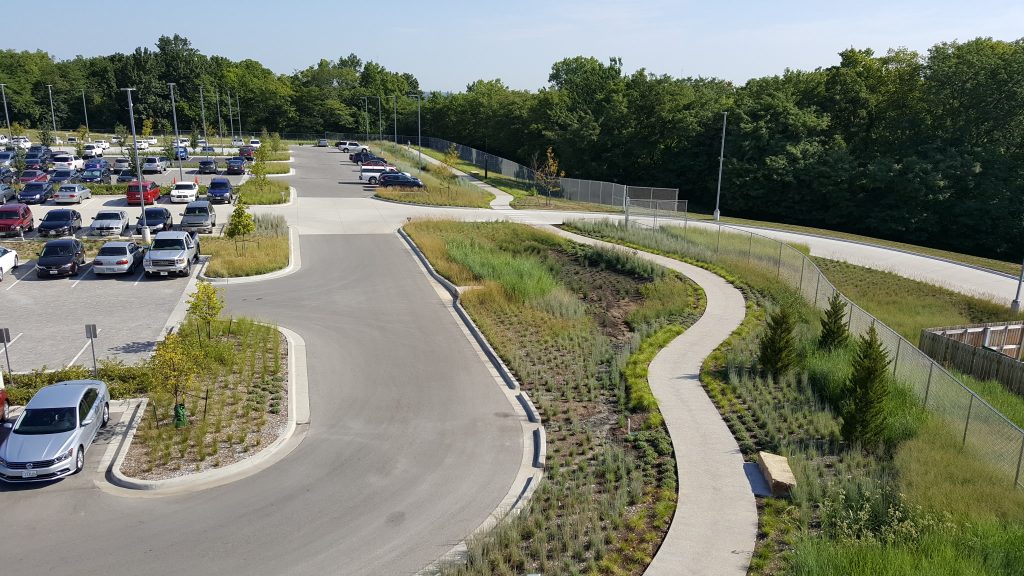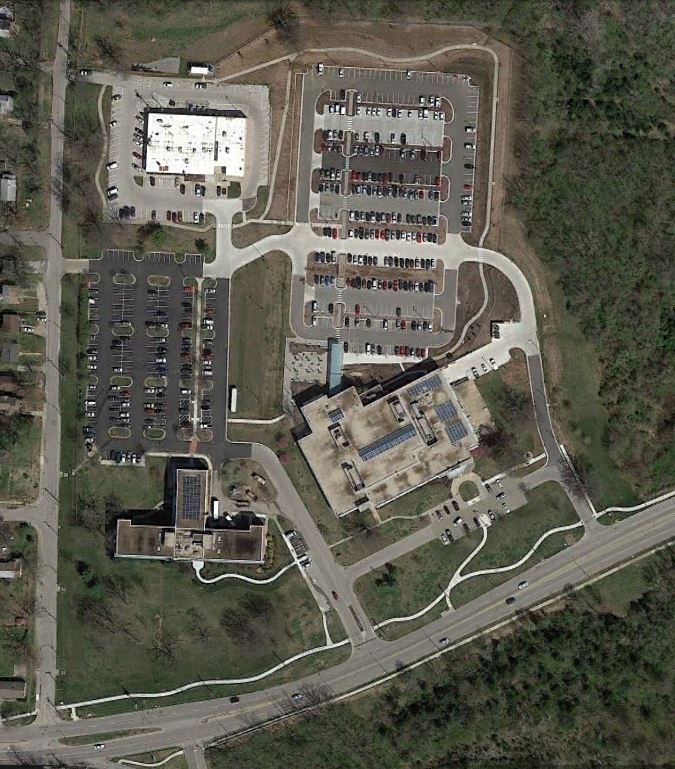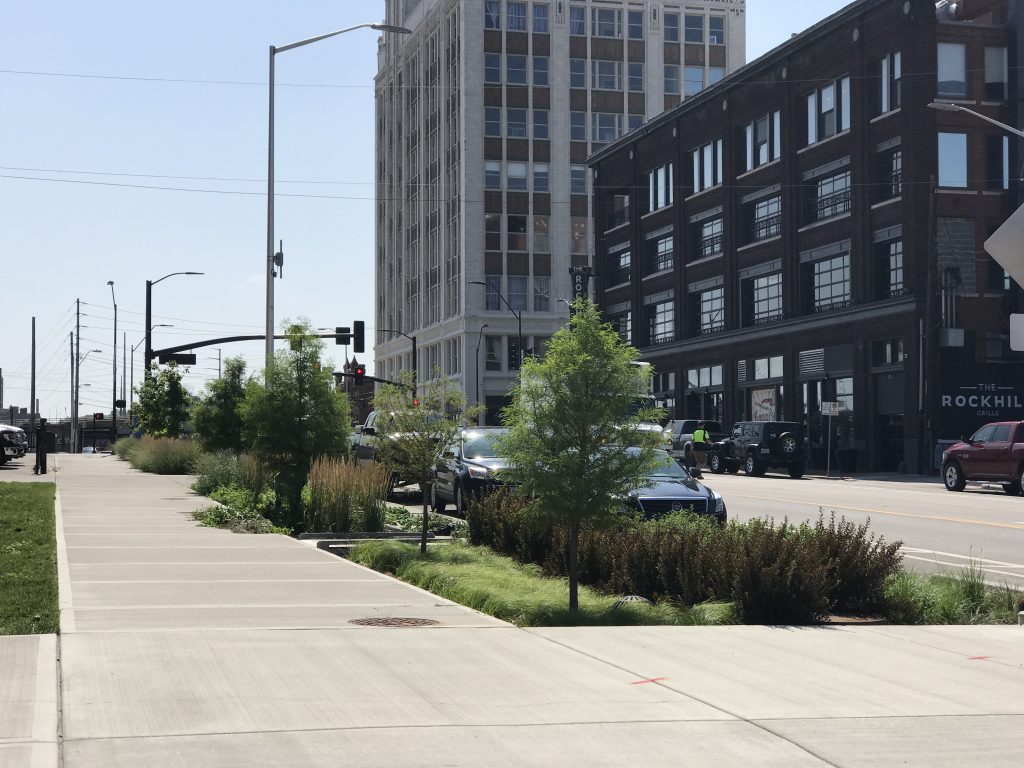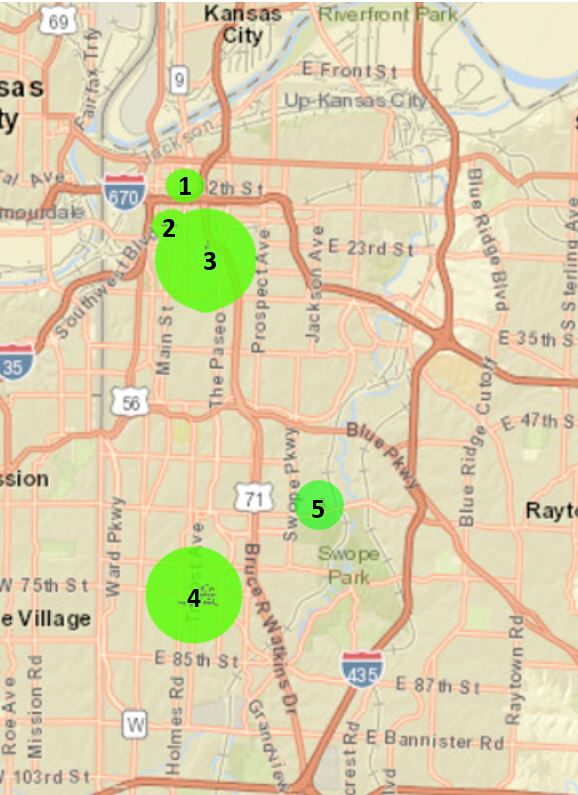Making Green Stewards
A federal mandate to make massive and costly repairs to stormwater and sewer infrastructure helped create a workforce development program for the future of Kansas City, Mo.

Along with more than 40 other cities nationwide, the U.S. Environmental Protection Agency (EPA) in the early 2000s directed Kansas City to correct issues in its combined sewer system as well as infiltration and inflow issues in its separate sewer system. The combined sewer system covers about 18% of the 826-km2 (319-mi2) city.
A standard past approach was to construct a new gray infrastructure — paved stream ways, larger pipes, more tunnels, and other hard infrastructure — to move stormwater away from urban areas quickly.
Because improvements and changes to these combined and separate systems would affect each other, and for other reasons, Kansas City took a different path: A green stormwater infrastructure approach aimed at improving water quality while maximizing economic, social, and environmental benefits.
“Our citizens suggested we should adopt an ‘every drop counts’ philosophy,” said Terry Leeds, Director of KC Water, the water, wastewater, and stormwater utility serving Kansas City, Mo. “Beyond fixing the problem, we were charged to educate and equip our customers to reduce the amount of rainwater entering the sewer system. That means green infrastructure design, targeted public investments in green infrastructure projects, and building a workforce to support this work in the future.”
Job Creation Initiative
A key element to preparing the community for this different approach to stormwater management was a $5 million (in 2008 dollars) initiative of “job creation and workforce development initiatives related to specific program objectives, including ‘green collar’ jobs.”
Work on the job development program began in earnest in 2016, when Kansas City researched similar workforce development programs across the country. The result was to refine the intent of the program, named Green Stewards, with two goals:
- Provide support for the work of a KC Water division known as Green Solutions.
- Give hard-to-employ, unemployed, or underemployed workers the training and experience to qualify for continued employment in the green stormwater infrastructure field.
KC Water established the Green Solutions crew in November 2012. This team of maintenance workers committed to green infrastructure projects includes a utility supervisor, two landscape technicians, four maintenance workers, and one equipment operator. Green Stewards would support this core team and focus on new green stormwater infrastructure created under the Overflow Control Program, also known locally as Smart Sewer.

The set-up of the Green Stewards program included three basic elements: hire, train, and maintain. KC Water determined that a nonprofit contractor would be best suited to establish the Green Stewards program by providing soft-skills training, individual support, encouragement, and technical training. To provide an opportunity for successful career development, the program went beyond water to include training regarding other environmental priorities of the city, such as litter removal and increasing the tree canopy.
Partnership Support
In September 2016, KC Water issued a request for qualifications/proposals clarifying program goals and specifying responsibilities and expectations of the managing organization as well as other details. In May 2017, KC Water contracted with Bridging the Gap, a local nonprofit that already provided various environmental services to the community and has experience managing other Kansas City environmental programs.
Bridging the Gap led recruiting and hiring efforts for the Green Stewards team by focusing on candidates with barriers to employment. In addition to recruitment tactics such as social media and neighborhood flyers, outreach included partnerships with other Kansas City nonprofits with employment-related missions. These organizations are committed to enhancing the employability of women, the unemployed and underemployed, people involved with the criminal justice system, former gang members, and others at risk for violence. Bridging the Gap generally incorporated city employment protocols, such as attendance, tardiness, sick-day and weather policies, and uniform dress codes. The program diverged from the city on some points. For example, candidates were not subject to random drug testing, since many target candidates already participated in some form of testing through the criminal justice system. The creation of the Green Stewards program coincided with KC Water’s partnership with the Water Environment Federation (WEF; Alexandria, Va.) and the National Green Infrastructure Certification Program (NGICP). The training includes 40 hours of classroom instruction and demonstrations on such topics as watersheds, the hydrologic cycle throughout urban development, various components of green infrastructure, and proper installation and maintenance techniques. Field visits to green infrastructure sites supplemented classroom hours.
Green Maintenance Tasks and More
Utility leaders incorporated other skill development into the Green Stewards’ daily activities, such as training on green infrastructure maintenance techniques, processes, and tools; composting; mulching; using rental equipment; driving with trailers; and responsible use of leaf blowers. Green Stewards learned hydrology during rain events by “following the water” — observing and timing rainfall flow from parking lots and commercial rooftops into infrastructure sites and watching bioretention cells fill. They combined these observations with precipitation data to calculate drainage rates.
Green Stewards also took courses in personal time management, professionalism in the workplace, financial literacy and budgeting, and varying environmental topics beyond water, such as collection of native plant seed. Participants also attended tours of native plant nurseries and local sustainable agriculture and aquaculture sites. Participants achieve digital literacy — a skill important in virtually every 21st-century industry — through training on electronic tablets and operational software used to record before- and after-maintenance work and other green site data.
Early Successes
The early outcomes showed success through positive motivation. The “family” culture of Bridging the Gap supported Green Stewards. The program includes incentives, such as modest raises for passing the NGICP exam and regular attendance. Pride in green achievement was a motivator. Green Stewards often make comments such as, “That looks so much better than it did before we were here.” One Green Steward gives “tours” to his fellow riders on a local bus route that has many green stormwater infrastructure installations. Another Green Steward has created a native planting at home.

On the other hand, worker retention sometimes was a greater challenge than anticipated. Some struggled with the daily work commitment, the requirements of full-time employment, or with recurrences of substance abuse. A key takeaway is the need to “leaven” each class with candidates who have previous work experience and no history of substance abuse or homelessness in order to model healthy choices for those struggling with difficult challenges.
Through late 2019, KC Water offered three sessions of NGICP training as part of the Green Stewards Program. The fall 2017 session was offered to Kansas City staff only. The fall 2018 session included city staff, contractors, the newly hired Green Stewards program manager and crew lead, and five Green Steward candidates. During the spring 2019 session, three new Green Stewards candidates joined for training and testing.
The initial Green Stewards participants began maintaining green stormwater infrastructure in spring 2018. Green Stewards spend most of their time assisting with day-to-day maintenance and inspection work at five green stormwater infrastructure sites on city property in the combined sewer system area.
Green Stewards remove litter and leaf debris; manage weeds, pests, and plant disease in vegetated areas; verify open flow pathways into rain gardens and inlets; clean curbs near rain gardens; remove silt; repair erosion; touch-up and top-dress mulch as needed; prune and trim vegetation; and identify and help replace dead plants.
Green Stewards tasks are complementary to the work assigned to the Green Solutions crew. For example, the Green Solutions crew generally manages tasks that require application of chemicals or use of motorized equipment. The teams coordinate work to ensure completion of tasks in the proper sequence.

Entering 2020, 18 persons had participated in the Green Stewards program to date, and seven are still engaged in the program. Bridging the Gap tracks workforce development success in many other ways. For example, six participants passed the NGCIP certification examination. Six have improved their employment situation, such as promotion, finding or about to find better jobs, or entrepreneurial pursuits. Four completed or are about to complete a GED high school equivalency certificate; another has enrolled in college. Transportation is a common barrier to employment; three participants obtained a driver’s license or a vehicle.
Green Stewards can complete the program after 18 months and remain involved up to 2 or 3 years. Bridging the Gap supports Green Stewards as they seek employment. A Green Steward can join the KC Water Green Solutions crew, private landscaping companies, Bridging the Gap, maintenance positions with Kansas City Public Works or Parks & Recreation departments, or entrepreneurial development of a landscaping business.
Data for the Future
As a data-driven municipality and water services department, an important part of the Green Stewards program is tracking green infrastructure maintenance for monitoring and reporting purposes.
Green Stewards record green site information on tablets equipped with data-collection software. Condition ratings for functionality, appearance, and litter are among the data collected. Crew members also use tablets to take before-and-after pictures and note the number and placement of any dead plants. The tool also can track information related to 311 service requests regarding illegal dumping, littering in the green infrastructure beds, or other complaints.
Timely collection and reporting of information — such as which green stormwater infrastructure types require the most maintenance hours, common resident complaints, and which components tend to fail or clog — can help make better operational decisions and guide planning of future green infrastructure projects. Not only is this data important to green infrastructure maintenance in Kansas City, but also it is creating analyzable data that can be useful in the national conversation about the cost of green infrastructure.
Evaluation of the Green Stewards workforce development effort is in early stages. Still to be learned are the effectiveness of NGICP training to achieve desired objectives; how well Green Stewards transition to other meaningful employment after a two-year participation, including potentially joining the city-employed Green Solutions crew; how well the tasks of the Green Stewards can expand beyond KC Water to other city departments, and whether hiring criteria need to be revised.
Yet, it is clear that the program is quietly taking effect. Kansas City’s 25-year program to improve regional water quality, as required by a federal mandate, will benefit in Year 26 and beyond thanks to presence of a workforce trained to maintain and extend green stormwater infrastructure. Green Stewards are benefiting themselves and Kansas City today, and they are laying the foundation for cleaner water, a better environment, and sustainable employment for future generations.
Lisa Treese, RLA, LEED AP, is the Senior Landscape Architect at KC Water (Kansas City, Mo.). Kristin Riott is the Executive Director of Bridging the Gap (Kansas City, Mo.). Regan Brotherton is an Environmental Scientist at Taliaferro & Browne Inc. (Kansas City, Mo.).
